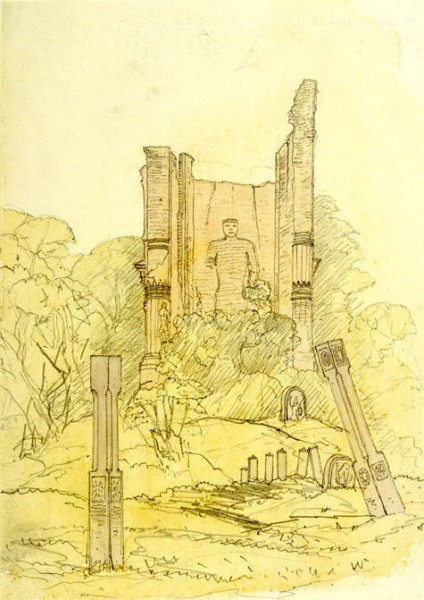
Ruins, Polonnaruwa (Ceylon). 13 February 1868
Artist: Leighton, Stanley (1837-1901)
Medium: Pencil on paper
Date: 1868
Ruins of the Lankatilleke Vihara at Polonnaruwa in Sri Lanka (Ceylon), dated 13th February 1868. The image is inscribed on the mount in pencil: ‘Ruins at Toparè. Jaita-wana-rama. 13 Feb. 1868.’
Polonnaruwa became an important Sinhalese kingdom in the 11th century when King Vijayabahu I drove the Cholas from India off the island. By the 13th century the island was again overrun by Indian invasions and the city was abandoned leaving an area full of ruined buildings, Buddha statues, parks and a 2400 hectare tank, the ‘Sea of Parakrama.’ S.M. Burrows states in ‘The Buried Cities of Ceylon’ (1885): “There was evidently a gateway between the outer and inner shrines; and at the western end of the latter stands a gigantic brickwork figure of Buddha, nearly 60 ft. high, which was originally coated with chunam. A small row of windows, low down in the wall, appears to have been the only means of admitting light into this shrine; and Tennent conjectures with some probability that by means of a window situated above the entrance to the inner shrine, and invisible from below, a ray of light was thrown full upon the face of the statue, giving it a mysterious halo amid the surrounding gloom.” Source:The British Library Board


As a frequent visitor to lanka I am am ama.zed at these prints and photographs. I am australian and my wife is sinhalese.All my children Have been to sri lanka and love it. Living in Western society ,it is so refreshing to see the respect these people show to others. I LOVE THE PLACE